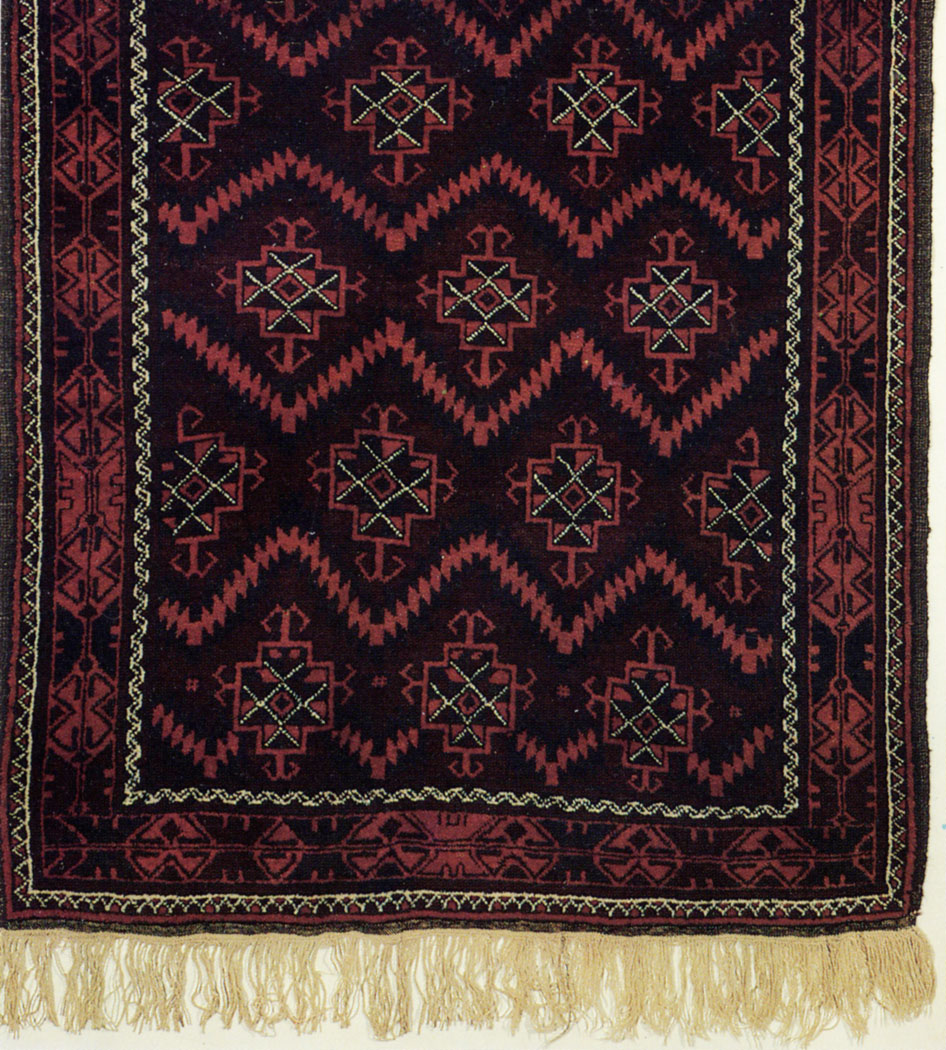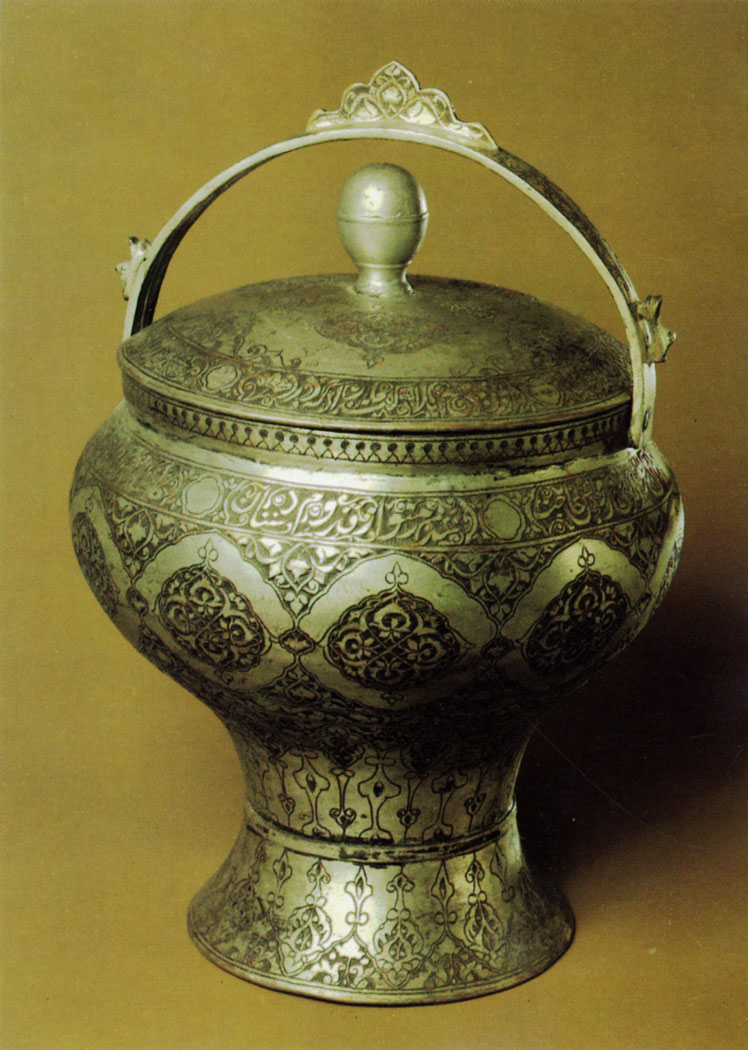
Afghanistan

Carpet
Afghanistan. Late 19th century
Pile-woven wool (natural dyes).
110 × 234 cm. Inv. No. 36570 КП
Acquired in 1980. First publication.
Carpet-making is an ancient Afghan craft. It was widespread in northern and north-western provinces of the country. Time has occasioned very little change in the designs of Afghan carpets and the techniques used for making them. Carpets (some 60 types in all) are still hand-woven of high-quality wool and dyed in natural pigments. A typical palette for such carpets includes various shades of red, yellow, brown and grey. The ornamentation usually consists of geometric or geometrically stylized floral motifs arranged in accordance with traditional compositional principles.

Pot.Ghazni (?)
Afghanistan. Late 18th century
Copper, tinned and engraved.
Height 30.5 cm, diameter of the base 15.8 cm. Inv. No. 36412 КП
Acquired in 1980. First publication.
For many centuries the Afghan decorative metal-work was influenced by Iranian art. From the 1Oth-12th centuries onwards, the main centres of metal-work in Afghanistan were Ghazni, Herat, Kabul as well as some other cities. The surviving examples of medieval Afghan metalwork testify to the high artistic and technical level of this craft. The pot from the Museum's collection is a typical example of Afghan tinned copperware. Both its shape and the character of its engraved ornamentation are reminiscent of the similar articles from Iran. But the ornamentation also displays some characteristically local features. This refers to the arch-shaped decor of the lower part of the body and the base of the vessel and to the treatment of the background ornamentation.
|
ПОИСК:
|
© MUSEUMS.ARTYX.RU, 2001-2021
При использовании материалов сайта активная ссылка обязательна:
http://museums.artyx.ru/ 'Музеи мира'
При использовании материалов сайта активная ссылка обязательна:
http://museums.artyx.ru/ 'Музеи мира'